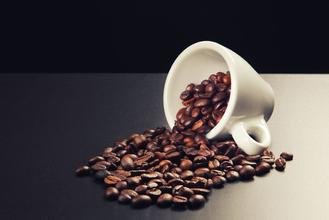The Environmental processing process of planting and picking Coffee
The Environmental processing process of planting and picking Coffee
Selective picking, that is, walking between trees several times at intervals of 8-10 days and picking only those ripe red berries, higher quality coffee beans are used.
Advantages: the picked coffee fruit is uniform in size, similar in maturity and free of other impurities, which is beneficial to post-processing.
Disadvantages: high cost
There are two ways to prepare coffee beans for the baking process. The method chosen has a significant impact on the final value and quality of coffee. The cheapest method of processing is called "drying", which is used for lower-grade coffee beans, while higher-quality coffee beans are processed by "wet treatment". Drying is used for unwashed coffee beans. Wet treatment is used for thoroughly washed or semi-washed coffee beans. Except for the more common use of drying in Brazil and Ethiopia, most Arabica coffee beans are processed by wet treatment. Some robastian coffee beans are also processed by wet treatment.
Drying is also known as sun-drying or non-washing: the drying method is relatively simple. First of all, spread the freshly picked fruit on the exposure field for a week or two until the fruit crackles and dries naturally. After that, the dried pulp, endocarp and silver peel are removed by a sheller.
Advantages: the fruity aroma of coffee beans can be well preserved and the price is low.
Disadvantages: coffee beans may be contaminated with the fishy smell of the ground, and the quality of coffee beans is uneven.
Fresh fruit-sun-dried-remove all pericarp, seed coat-coffee raw beans
Note: this method is mostly used for lower-grade coffee beans and is still widely used in Brazil, Ethiopia, Congo, Indonesia, Yemen and other places.
The washing method is also called wet treatment: after the outer pulp of the coffee fruit is removed by the pulp separator within 12 hours after the coffee is picked, the coffee beans are soaked in a large cement tank filled with water to separate the fruit. The coffee beans are then pasted in the fermentation box for about 12-36 hours, containing 15% water after fermentation, and the fermented coffee beans are washed clean with clean water. The coffee beans are dried in a dryer or in the sun, and the coffee beans are called "parchment coffee beans", waiting for export.

Important Notice :
前街咖啡 FrontStreet Coffee has moved to new addredd:
FrontStreet Coffee Address: 315,Donghua East Road,GuangZhou
Tel:020 38364473
- Prev

Description of Origin and Flavor of American Coffee Taste treatment method Grinding scale of Variety producing area
Description of the origin and flavor of American coffee the grinding scale of the variety producing area should not underestimate the importance of the grinder to the taste of coffee. If your coffee tastes bitter, it may be because it is too ground or too fine. On the other hand, if the coffee is tasteless, maybe you don't grind it enough, but you grind it too rough. Never use coffee grounds repeatedly. Once cooked,
- Next

What kind of milk is not suitable for coffee flower?-Coffee flower whole milk requirement
Coffee flower is not suitable for what milk as the material-coffee flower whole milk requires steam pipe steam way, mainly divided into: external expansion type and centralized type two. Different forms of steam pipe, the steam intensity and steam output will be different, coupled with the change of the position of the outlet hole and the number of holes, it will cause the difference between the angle and the way when milking. While the external expansion type
Related
- What brand of black coffee is the most authentic and delicious? what are the characteristics of the flavor of the authentic Rose Summer Black Coffee?
- Introduction to the principle and characteristics of the correct use of mocha pot A detailed course of mocha pot brewing coffee is described in five steps.
- Which is better, decaf or regular coffee? how is decaf made?
- How much is a bag of four cat coffee?
- How about four Cat Coffee or Nestle Coffee? why is it a cheap scam?
- Which is better, Yunnan four Cats Coffee or Nestle Coffee? How about cat coffee? is it a fake scam? why is it so cheap?
- How about Cat Coffee? what grade is a hoax? which instant coffee tastes better, four Cat Coffee, Nestle Coffee or G7 coffee?
- Process flow chart of coffee making-Starbucks coffee making process what coffee tastes good at Starbucks
- The top ten best coffee beans in the world Rose summer coffee or Tanzanian coffee tastes good
- Yunnan four cat coffee is good to drink?_four cat coffee is a big brand? four cat blue mountain coffee is fake?

